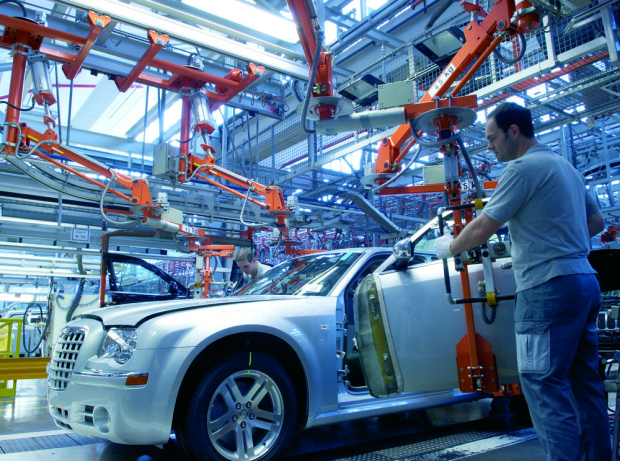by Matthew J. Moberg, CFA, Franklin Templeton Investments
We believe innovation can be found in any part of the economy and seek to invest wherever innovation occurs, regardless of sector classification, market capitalisation or geographical location.
There have been significant breakthroughs in many sectors. To organise the change occurring in the economy, we have outlined five major evolving platforms of growth. These are not intended to be completely inclusive; in fact, we hope they are not. We expect these five platforms of growth to generate considerable economic value over the next five to 10 years.
Global E-commerce
We believe global e-commerce is an arena of tremendous opportunity. Per estimates, global sales were only 14% penetrated by e-commerce pre-COVID.1
Today, with the new reality of COVID, we have seen estimates of between 22%–25% penetration.2
Even in the United States, so-called “highly” penetrated industries, like travel, books, office supplies and media are, on average, only 41% penetrated.3 And, there are many more industries—like groceries and global transportation—that are only modestly penetrated by e-commerce.
Within global e-commerce, beyond companies like Amazon and Alibaba, we see significant opportunity in industries like fashion, automobiles, travel, ride sharing, restaurant delivery and even textbooks.4 We also see opportunity in payment companies that significantly remove friction, both in terms of ease of use, security and safety from the system.
Other opportunities include business-to-business (B2B) procurement, and software that enables brick-and-mortar companies to have an online presence. Drone manufacturers and other new ways to deliver packages and products could also become potential investments.
The common perception may be that global e-commerce is late stage. In our view, there is so much further to go.
Genetics Breakthroughs
The sequencing—or decoding—of the gene is one of the greatest accomplishments of our era. The gene was discovered in 1953,5 but first sequenced during the Human Genome Project in 2003 at a cost of US$2.7 billion.6 The cost of gene sequencing—or mapping DNA for diagnostic and curative purposes—has fallen rapidly in recent years. We believe the industry is on the cusp of creating meaningful diagnostics and therapeutics—and, as a result, wealth creation. We are particularly interested in companies within the diagnostics, gene editing and gene silencing arenas that will likely benefit from this dynamic.
Today, mapping a genome costs roughly US$1,000; at this price, we believe there should be an explosion of possibilities. These opportunities may go beyond human gene therapeutics, to agricultural and even artificial intelligence applications.
Intelligent Machines
Artificial intelligence or machine learning is permeating every layer of product development. From using simulation tools, to advanced graphics, to designing products and getting immediate feedback as to points of weakness in a structure, or real-time intelligence on wear and tear that can feed back into new designs—smart machines are involved.
If the last 30 years were spent organising data with mainframes, personal computers and mobile phones, we believe the next 30 years could be set up to take that data and change our lives in the physical world. We expect to see opportunities in companies that intelligently design, manufacture, transport and maintain physical machines, in addition to investing, of course, in the machines themselves. We view this as a virtuous cycle, which will have shorter and shorter feedback loops, making improvements to physical goods much faster.
The future of production will include individualised products designed specific to the needs of the customer. Efficiencies created in the design and manufacturing process, employing massive amounts of data, will enable that level of specificity and customisation.
New Finance
We believe access to capital is one of the fundamental differences between developed and developing countries—the grease that allows efficient transfer of value. We believe there are three vectors that drive access to capital.
The first is our concept of what constitutes money. In the past, people bartered for goods and services, which can be very inefficient. We have moved from barter to precious metals—backed by their own innate scarcity—to fiat currency backed by the full faith and credit of a government. Today, we are talking about currencies backed by algorithms.
Similarly, the other two vectors, efficient pricing and methods of exchange, have also significantly evolved. In the past, the better barterer determined the price of your goods and services; then it was a loan officer at a bank with all his/her intrinsic biases.
Today, we are increasingly using data to appropriately price risk, allowing us to allocate capital in more efficient ways. Methods of exchange are also evolving with the trends in e-commerce, allowing mobile payments and digital wallets to gain traction.
Exponential Data
Underlying virtually all our investment themes is the constant of data. Without data, none of these platforms can be successful. But data isn’t virtual—there is a physical component to data that is often ignored. We need to clean the collected data, then store and deliver the same data. That requires massive amounts of data centers, fiber-optic cable, and cell towers—among other supporting infrastructure. To use data for something like artificial intelligence, computing power and memory are crucial. Graphics processing units, central processing units and field programmable gate arrays represent some of the many components necessary to process that data more efficiently.
The creation, cleaning, storage and delivery of data will lead to new applications like augmented and virtual reality, artificial intelligence and machine learning, software as a service, and the sharing economy. There are many investment opportunities in companies that play critical roles all along this value chain. Some have postulated data is becoming the oil or gold of the new economy. We agree.
Any Sector. Any Market Cap. Anywhere. Right in Silicon Valley for Over Half a Century.
As active managers, we recognise the importance of having the flexibility to invest in any sector, any market capitalisation, and any place—because innovation is everywhere. Outperforming the market is hard and we have designed our process and product to be as flexible as possible. Being in the heart of Silicon Valley allows us to work side-by-side with some of the world’s leading innovators. Our team is constantly talking with thought leaders across industries; reading up on the latest developments; and meeting with companies, public and private, to understand the technologies and ideas that could have transformative potential. Change is happening rapidly, and we believe that only through active management is it possible to identify and capitalise upon significant inflection points.
To get insights from Franklin Templeton delivered to your inbox, subscribe to the Beyond Bulls & Bears blog.
For timely investment updates, follow us on Twitter @FTI_Global and on LinkedIn.
Important Legal Information
This material is intended to be of general interest only and should not be construed as individual investment advice or a recommendation or solicitation to buy, sell or hold any security or to adopt any investment strategy. It does not constitute legal or tax advice.
The companies and case studies shown herein are used solely for illustrative purposes; any investment may or may not be currently held by any portfolio advised by Franklin Templeton. The opinions are intended solely to provide insight into how securities are analysed. The information provided is not a recommendation or individual investment advice for any particular security, strategy, or investment product and is not an indication of the trading intent of any Franklin Templeton managed portfolio. This is not a complete analysis of every material fact regarding any industry, security or investment and should not be viewed as an investment recommendation. This is intended to provide insight into the portfolio selection and research process. Factual statements are taken from sources considered reliable but have not been independently verified for completeness or accuracy. These opinions may not be relied upon as investment advice or as an offer for any particular security. Past performance is not an indicator or a guarantee of future results.
The views expressed are those of the investment manager and the comments, opinions and analyses are rendered as of publication date and may change without notice. The information provided in this material is not intended as a complete analysis of every material fact regarding any country, region or market.
Data from third party sources may have been used in the preparation of this material and Franklin Templeton (“FT”) has not independently verified, validated or audited such data. FT accepts no liability whatsoever for any loss arising from use of this information and reliance upon the comments, opinions and analyses in the material is at the sole discretion of the user.
Products, services and information may not be available in all jurisdictions and are offered outside the U.S. by other FT affiliates and/or their distributors as local laws and regulation permits. Please consult your own financial professional or Franklin Templeton institutional contact for further information on availability of products and services in your jurisdiction.
Issued in the U.S. by Franklin Templeton Distributors, Inc., One Franklin Parkway, San Mateo, California 94403-1906, (800) DIAL BEN/342-5236, franklintempleton.com—Franklin Templeton Distributors, Inc. is the principal distributor of Franklin Templeton Investments’ U.S. registered products, which are not FDIC insured; may lose value; and are not bank guaranteed and are available only in jurisdictions where an offer or solicitation of such products is permitted under applicable laws and regulation.
What Are the Risks?
All investments involve risks, including possible loss of principal. The value of investments can go down as well as up, and investors may not get back the full amount invested. The technology industry can be significantly affected by obsolescence of existing technology, short product cycles, falling prices and profits, competition from new market entrants as well as general economic conditions. Investments in fast-growing industries, including the technology and health care sectors (which have historically been volatile) could result in increased price fluctuation, especially over the short term, due to the rapid pace of product change and development and changes in government regulation of companies emphasising scientific or technological advancement or regulatory approval for new drugs and medical instruments. Actively managed strategies could experience losses if the investment manager’s judgement about markets, interest rates or the attractiveness, relative values, liquidity or potential appreciation of particular investments made for a portfolio, proves to be incorrect. There can be no guarantee that an investment manager’s investment techniques or decisions will produce the desired results.
______________________________________
1. Source: Lipsman, A., “Global Ecommerce 2019: Ecommerce Continues Strong Gains Amid Global Economic Uncertainty,” eMarketer, June 2019.
2. Source: MoffettNathanson,”Payments: From Tidal Wave to Tsunami—Our Proprietary eCommerce Forecast, Updated for COVID-19,” as at 22 May 2020.
3. Source: Lipsman, A., “US Ecommerce 2019: Mobile and Social Commerce Fuel Ongoing Ecommerce Channel Shift,” eMarketer, 27 June 2019.
4. Source: Heather, J. M., and B. Chain, 2016, “The sequence of sequencers: The history of sequencing DNA,” Genomics, 107(1), 1–8.
5. Source: Singh, S., 2018, “The hundred-dollar genome: a health care cart before the genomic horse,” CMAJ: Canadian Medical Association journal = journal de l’Association medicale Canadienne, 190(16), E514.
This post was first published at the official blog of Franklin Templeton Investments.
















